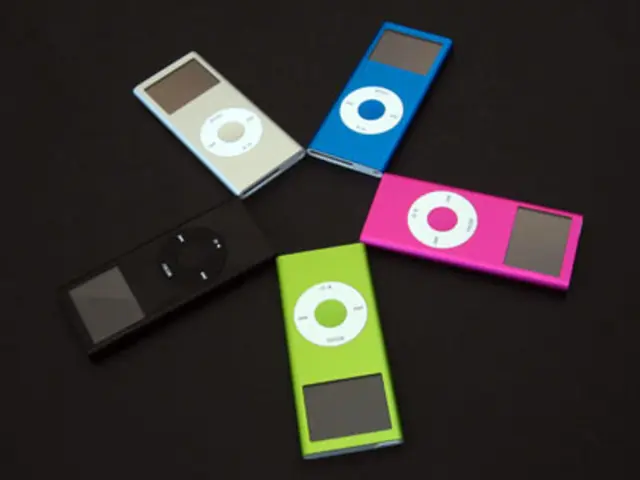Unleashing the Future Screens on iPhones: A New Era of Display Unification
Possible Demise of Display Notch on iPhone 18: Analysis of Potential Consequences
In the smartphone market's relentless pursuit of perfection, screen real estate becomes increasingly valuable. Leading the charge, iPhone manufacturers are all about offering a true, uninterrupted screen experience by minimizing any obstacles, such as camera and sensor cutouts. With the next generation of iPhones on the horizon, the buzz surrounds potential design changes, including the shrinking or elimination of the pill-shaped cutout that characterizes current iPhones like the iPhone X, 14 Pro, and the upcoming iPhone 18.
First introduced with the iPhone X, the notch served as a solution to expand the phone's screen space while reserving room for the front camera and Face ID sensors. The notch eventually gave way to a pill-shaped cutout with the iPhone 14 Pro, and by 2023, it was a component of Apple's Dynamic Island feature.
With the present and future design directions of the iPhone in focus, a popular rumor for both the iPhone 18 and the 20th Anniversary iPhone hints at the shrinking or removal of the pill-shaped cutout. In a recent Power On Newsletter, Mark Gurman from Bloomberg suggests that Apple will shrink the Dynamic Island in the iPhone 18, while The Information's Wayne Ma reported last month that the iPhone 18 and iPhone 18 Pro might feature a small pinhole cutout in the top left corner.
Reasons for Concern
While the idea of a more seamless screen experience sounds ideal, the potential removal of the pill raises concerns regarding app and interface design adaptability. With the pill being a physical part of the iPhone's interface, apps are structured around it. For example, using Google Chrome on an iPhone, you'll find the pill-shaped cutout located above the address bar.
If the pill is indeed removed, the screen space it occupied would become available for app usage. However, this could cause the Dynamic Island to appear as an overlay or remain as a static on-screen cutout. As a result, apps might end up looking messy and disorganized. Alternatively, apps could leave ample room for the Dynamic Island, leading to excessive dead space.
Despite these concerns, it's worth noting that developers are already struggling to fully utilize the iPhone's screen space to hide the cutout. For instance, some top streaming services are poorly optimized when it comes to handling cutout placement. Similarly, many games encounter issues when hiding the iPhone's camera cutout.
Will Apple eventually phase out the Dynamic Island?
The question remains: what about the long-term fate of the Dynamic Island feature? With a year, or more, until the unveiling of any significant change, it's plausible that the Dynamic Island may not disappear entirely. The iPhone 17 series is expected to debut later this year, and while some models might see the Dynamic Island shrink, its complete removal is unlikely.
The uncertainty around the Dynamic Island's future means developers will need to tackle the challenge of finding a new home for the feature once the display cutout is extinct. With multiple reports indicating changes coming as early as 2026 and beyond, it's crucial for Apple and other developers to start brainstorming potential solutions.
More from Tom's Guide
- How to Securely Access Your iPhone From Another Device
- iPhone 17 colors leak suggests a popular option could return
- Google Pixel Fold vs Samsung Galaxy Z Fold 4: Which Foldable Phone Wins?
As developers prepare for potential changes in the iPhone's display design, particularly the shrinking or elimination of the pill-shaped cutout, they must follow Apple's design guidelines and tools to create visually harmonious interfaces that can integrate with new hardware features. Implementing dynamic layouts and responsive UIs helps apps adjust to varying screen real estate changes, ensuring the optimum content focus even amid visual adjustments. To ensure smooth integration with evolving hardware and software, developers must utilize native frameworks and APIs provided by Apple.








